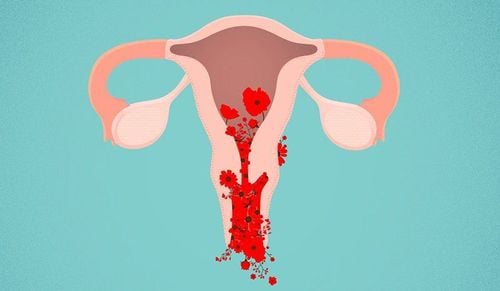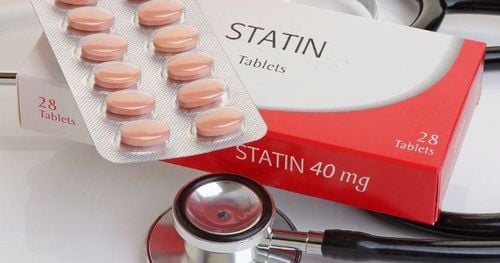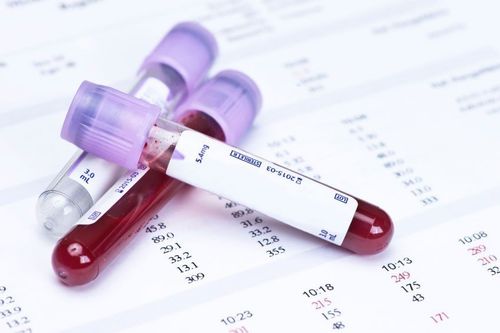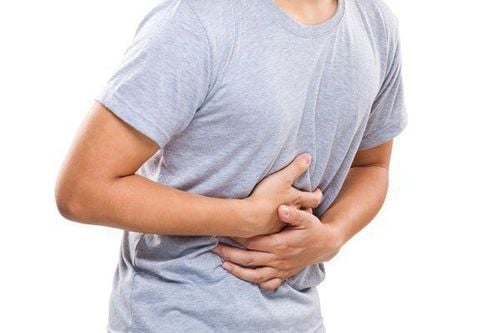This is an automatically translated article.
The article was professionally consulted with MSc Do Thi Hoang Ha - Doctor of Biochemistry, Laboratory Department - Vinmec Hai Phong International General Hospital.A blood test is a test that measures the levels of certain substances in the blood or counts different types of blood cells. This is one of the routine tests that doctors order when examining and treating patients. It provides important indicators to help diagnose disease, monitor disease progression and evaluate treatment progress.
1. How to read blood test results
Glu (Glucose): Blood sugar The reference range of the blood glucose test is 4.1-5.9 mmol/l.If it is outside the allowable reference range, it means you have a condition or low blood sugar. Elevated above the upper limit of the reference range is a person at high risk for diabetes or impaired glucose tolerance/metabolism.
SGOT & SGPT: Liver enzyme group Normal range from 9.0-48.0 with SGOT; 5.0-49.0 with SGPT.
The liver has many important functions and has a very complete enzyme system to perform the functions of synthesis and metabolism. These enzymes increase when there is damage to liver cells due to inflammation, fibrosis, cancer; or damage from a heart attack. And this index decreases when diabetes, pregnancy, Beriberi, ... If this limit is exceeded, the functions of liver cells are impaired, including an important function of detoxification. Therefore, the controlled use of foods and drinks that make it difficult for the liver to absorb and affect liver function such as animal fats, alcohol and carbonated drinks is an important factor.
Blood fat group: Cholesterol, triglyceride, HDL-Cholesterol (HDL-C), LDL-Cholesterol (LDL-C) Reference range of blood cholesterol < 5.2 mmol/l (for adults) and < 4.4.2 mmol/ l (for children).
Reference range of blood triglycerides is <1.7 mmol/l
Reference range of HDL-Cholesterol 1.03 – 1.55 mmol/l
Reference range of LDL-Cholesterol is ≤ 3.4 mmol/l
If these tests fall outside The allowable reference range value means you have high risk factors for cardiovascular diseases and blood pressure.
For the HDL-Cholesterol test, it is considered good cholesterol because it transports cholesterol from the blood to the liver as well as transports cholesterol from the plaque, thus reducing the risk of atherosclerosis and heart events other serious circuit.
For the LDL-Cholesterol test, it is considered bad cholesterol because LDL cholesterol increases too much in the blood leading to deposition in the walls of blood vessels, causing plaque. Atherosclerotic plaque gradually narrows or occludes blood vessels, leading to life-threatening diseases such as myocardial infarction, stroke,...
If blood cholesterol is too high, accompanied by high blood pressure and LDL- High cholesterol increases the risk of stroke and stroke due to high blood pressure.
GGT: Gamma Glutamyl Transferase is an enzyme that plays a role in amino acid metabolism and regulating the amount of glutathione in the body. GGT is also the first enzyme to be affected in the presence of liver and biliary tract disease, so GGT is a very sensitive test to help rule out a hepatobiliary disease. GGT also increased alone for alcoholics.
Reference range of GGT in blood: from 0-55 U/L.
Urea (blood urea) Reference range of blood urea : 2.5 - 7.5 mmol/l. Urea is the major degradation pathway of proteins in the body and is the most important product of nitrogen metabolism. Urea is synthesized in the liver in the Krebs cycle. Blood urea concentration depends on renal function, electrolyte balance and endogenous protein catabolism.
BUN (Blood Urea Nitrogen) is the nitrogen fraction of urea with a reference range of 8 - 24 mg/dL equivalent to 2.86 - 8.57 mmol/L (male) and 6 - 21 mg/dl equivalent to 2.14 - 7.50 mmol/L for female.
Increase in: Kidney disease, high protein intake, fever, infection, urinary obstruction...
Decrease in: low protein intake, severe liver disease, exhaustion...
Cre (Creatinin) This is a peach product clearance of creatine phosphate degradation in muscle, the amount formed is dependent on muscle mass, which is returned to the circulation. In the kidney, creatinine is filtered through the glomeruli and not reabsorbed by the renal tubules and excreted in the urine. Therefore, creatinine is also the most stable protein component regardless of diet and reflects the patient's renal function.
Reference range of blood creatinine: Male from 74 - 120 , female from 53 - 100 (umol/l).
Blood creatinine increased in: Kidney disease, diabetes, heart failure, essential hypertension,...
Blood creatinine decreased in: pregnant women, eclampsia, severe malnutrition, anti-hormone secretory syndrome Inappropriate diuresis...
Uric (Uric Acid) Is a product of purine base metabolism of nucleic acids, excreted mainly in the urine and a small part through the gastrointestinal tract.
Reference range of blood uric acid: male from 180 - 420, female from 150 - 360 (umol/l).
Increased blood uric acid in:
+ Primary increase: Due to increased production or decreased excretion (spontaneous) leading to diseases such as Lesh Nyhan, Von Gierke..
+ Secondary increase: Due to increased production (destruction) organization, increased cellular metabolism, obesity, fasting, myeloma, psoriasis ..), due to decreased elimination (renal failure, diuretic use, acute alcoholism, atherosclerosis, heart failure) blood stasis ..), for gout (rheumatism): there is increased uric acid / blood may be accompanied by tophi nodules in joints & urate stones in the kidneys.
Decreased blood uric acid in: Wilson's disease, antidiuretic hormone secretion syndrome, Falconi syndrome, hepatocellular damage, xanthin oxidase enzyme deficiency..
Immunological results Anti-HBs test: is a control test test the body's immunity to the hepatitis virus , to determine the level of antibodies against the hepatitis B virus. If a person has been vaccinated against hepatitis B or has been infected with the hepatitis B virus and After recovering from the disease, the body will produce hepatitis B antibodies against the virus and the anti-HBs test will be positive. If the hepatitis B antibody is strong (100-1000 UI/ml), the prevention is very simple, but if the antibody is weak (0-10 UI/ml), the possibility of hepatitis B is very high.
HbsAg: Hepatitis B surface Antigen – the surface antigen of the B virus. The results obtained from the blood test will show whether the test participant is infected with the B virus or not. This test reference range in blood is negative.
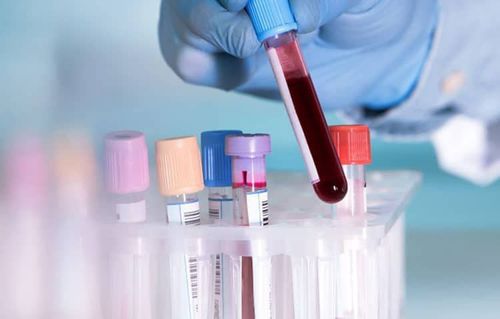
Red blood cell count Increases in dehydration and erythrocytosis.
Decrease in anemia.
Hemoglobin (Hb) The reading is normal if men are 130 – 160 g/L and women: 125 – 142 g/L.
Hemoglobin Increases in dehydration, heart disease and lung disease. Hemoglobin is reduced in anemia, bleeding, hemolytic reactions.
Red blood cell mass (HCT) Normal index in men 42 - 47 % and women is 37 - 42 %
Hematocrit increases in chronic lung disease, coronary heart disease, hypovolaemia...
Hematocrit decreases in loss blood, anemia, pregnancy.
Normal mean erythrocyte volume (MCV) is: 85-95 fL (1 fL = 10-15 L)
megaloblastic volume in vitamin B12 deficiency, folic acid deficiency, liver disease, alcoholism, erythrocytosis, hypothyroidism,...
Small red blood cell volume in iron deficiency, thalassemia syndrome and other hemoglobin diseases, anemia in chronic diseases, erythroblastic anemia, chronic renal failure .
Mean red blood cell Hb (MCH) MCH normal is 26-32 pg (1 pg = 10-12 g)
MCH elevation in anemia, severe hereditary erythrocytosis, presence of other factors cold condensation.
MHC decreased in iron deficiency anemia, anemia in general,
Mean erythrocyte count Hb (MCHC)
MCHC normal is 32-36 g/dL then:
MCHC Increases in normal red blood cell color, erythrocytosis heavy hereditary spherical glomerulus, presence of cold agglutinin factors. Decreased in anemia due to decreased folate or vitamin B12, cirrhosis of the liver, alcoholism.
Number of white blood cells in a volume of blood (WBC) Normal value: 4.0 to 10.0 G/L.
White blood cells increase in cases: Inflammation, malignancies, leukemias,...
Decreased white blood cells in cases: Hypoplasia or myelosuppression, vitamin B12 or folate deficiency, bacterial infection, ..
Neutrophils (NEUT) Normal value 42.8-75.8 % (1.5 - 7.5G/L)
Neutrophils are elevated in acute infections, acute myocardial infarction, stress
Neutrophils decrease in Viral infections, hypoplasia or myelosuppression, immunosuppressants, radiation therapy,...
Lymphocyte (LYM) Normal value: 16.8-45.3% (0.9 - 2.9 G/L).
Lymphocytes are increased in: Chronic infections, tuberculosis, some other viruses,...
Lymphocytes are decreased in: Immunodeficiency, HIV/AIDS infection, bone marrow suppression due to chemotherapeutic agents, cancer,...
Mono white blood cells Normal value: 4.7-12 % (0.3 – 0.9 G/l)
Increase: Patients with bacterial infections of other viral infections, monoclonal leukemia, in reproductive disorders marrow,...
Decreased in cases of anemia due to marrow failure, cancers,...
Eosinophilia (EOS) Normal value: 0.4-8.4% (0.03- 0.5 G/L)
If this value increases: Parasitic infections, allergies,...
Basophils (BASO) Normal value: 0.3-1.2% (0.01-0.07 G/l)
This value increases : In some cases allergies, leukemia or hypothyroidism may occur.
Number of Platelets in a Volume of Blood (PLT) Platelets play a vital role in blood clotting, with an average lifespan of 5 to 9 days.
Normal value: 150–350G/L.
Too low platelets can cause bleeding.
Too high platelets will form blood clots, obstructing blood vessels that can cause strokes, myocardial infarctions, pulmonary embolisms, blood vessel blockages,...
Increased platelets in case of Disorders bone marrow hyperplasia, idiopathic thrombocytosis, myelofibrosis, post-bleeding, splenectomy, infection.
Decreased platelets in cases of: Bone marrow suppression or replacement, chemotherapeutic agents, splenic enlargement, disseminated intravascular coagulation, platelet antibodies, post-transfusion purpura, thrombocytopenia due to neonatal allogeneic...
Platelet distribution (PDW) Normal value: 6 - 11%.
If increased: Lung K, sickle cell disease, gram-positive, gram-negative sepsis.
If reduced: Due to alcoholism.
Mean Platelet Volume (MPV) Normal Value: 6.5 - 11fL.
Increase: Heart disease, diabetes, smoking, stress, thyroid toxicity...
Decrease: Aplastic anemia, megaloblastic anemia, cancer chemotherapy, white blood cell grant...
2. Notes when testing blood
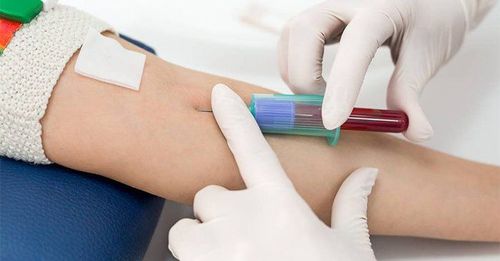
The doctor only needs to take a small amount of blood for the test, so the patient usually doesn't feel any discomfort. But some people will feel dizzy during and after the test. If this has happened to you, tell the testing staff so they know and can help you feel more comfortable.
After the test, there may be a small bruise where the needle was inserted. Bruising can be painful, but is usually harmless and fades after a few days.
Like any wound, an infection can develop where the needle was inserted. If this is the case, you should go to a medical facility to be examined.
In rare cases, the patient feels weak during the blood test. Tell the testing staff if you feel faint. At this point, you should lie down immediately to avoid fainting.
Vinmec International General Hospital is one of the hospitals that not only ensures professional quality with a team of leading medical doctors, modern equipment and technology, but also stands out for its examination and consultation services. comprehensive and professional medical consultation and treatment; civilized, polite, safe and sterile medical examination and treatment space. Customers when choosing to perform tests here can be completely assured of the accuracy of test results.
Please dial HOTLINE for more information or register for an appointment HERE. Download MyVinmec app to make appointments faster and to manage your bookings easily.






